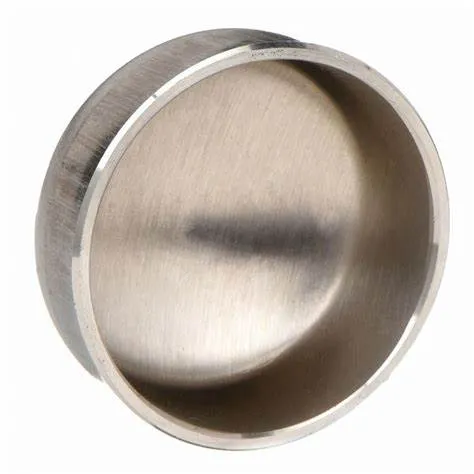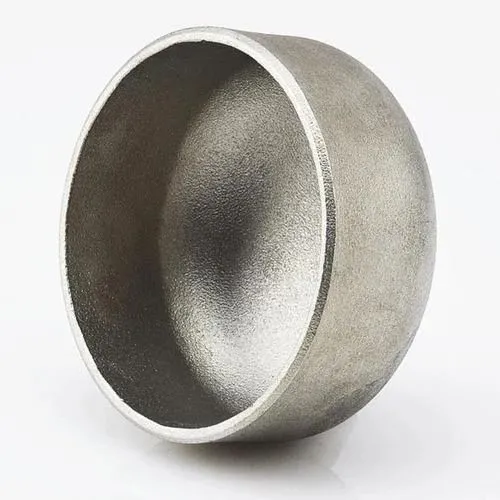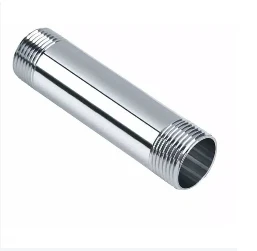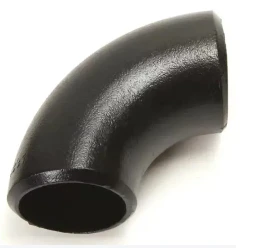JIS B2311 یک استاندارد صنعتی ژاپنی است که اتصالات لوله جوش لب به لب، از جمله درپوش های مورد استفاده در سیستم های لوله کشی را پوشش می دهد. کلاهک های جوش لب به لب به منظور بستن انتهای لوله، ایجاد آب بندی برای جلوگیری از نشت یا آلودگی هستند. در اینجا مقدمه ای از کلاهک های جوش لب به لب JIS B2311 آورده شده است:
- 1. JIS B2311 Standard:
- - استاندارد JIS B2311 الزامات طراحی، ابعاد، مواد، ساخت و آزمایش اتصالات لب به لب از جمله درپوش ها را در سیستم های لوله کشی مشخص می کند.
- - استاندارد تضمین می کند که کلاهک های تولید شده مطابق با استانداردهای JIS با استانداردهای کیفی مطابقت دارند و با سایر اجزای لوله کشی سازگاری دارند.
- 2. سرپوش جوشکاری:
- - کلاهک جوشکاری لب به لب، مطابق با JIS B2311، اتصالی است که برای پوشش و مهر و موم کردن انتهای لوله به طور ایمن طراحی شده است که محافظت و حفظ یکپارچگی سیستم لوله کشی را ارائه می دهد.
- - از کلاهک ها در شرایطی استفاده می شود که انتهای لوله نیاز به بسته شدن دائمی یا موقت داشته باشد تا از نشتی، آلودگی و یا ایجاد پایانی برای سیستم جلوگیری شود.
- 3. مصالح و ساخت و ساز:
- - کلاهک های جوش لب به لب تحت مشخصات JIS B2311 در مواد مختلفی مانند فولاد کربنی، فولاد ضد زنگ و فولاد آلیاژی برای برآوردن نیازهای کاربردی مختلف موجود است.
- - این درپوش ها با استفاده از روش های استاندارد ساخت و ساز برای اطمینان از اتصال قوی و بدون نشتی هنگام جوشکاری به انتهای لوله تولید می شوند.
- 4. کاربرد و مزایا:
- - کلاهک های جوشکاری لب به لب در صنایع مختلف، از جمله نفت و گاز، فرآیندهای شیمیایی، تصفیه خانه های آب و موارد دیگر در مواردی که انتهای لوله باید به طور ایمن درپوش باشد، کاربرد دارد.
- - درپوش ها از انتهای لوله ها در برابر عناصر محیطی محافظت می کنند، از آلودگی جلوگیری می کنند و به حفظ پاکیزگی و یکپارچگی سیستم لوله کشی کمک می کنند.
- 5. نصب و جوشکاری:
- - هنگام نصب کلاهک های جوش لب به لب برای اطمینان از مهر و موم محکم و ضد نشتی، روش های صحیح نصب، از جمله تراز صحیح، آماده سازی انتهای لوله و تکنیک های جوشکاری ضروری است.
- - جوشکاری یک روش متداول برای اتصال کلاهک ها به لوله ها، ایجاد یک بسته ایمن و دائمی است که می تواند فشار، تغییرات دما و جریان سیال درون سیستم را تحمل کند.
- به طور خلاصه، کلاهک های جوش لب به لب JIS B2311 اجزای مهمی هستند که در سیستم های لوله کشی برای آب بندی و محافظت از انتهای لوله ها به طور ایمن استفاده می شوند. این درپوش ها با الزامات استاندارد مطابقت دارند تا از کیفیت، قابلیت اطمینان و سازگاری در کاربردهای صنعتی که در آن بسته شدن لوله و محافظت لازم است اطمینان حاصل شود.
What Is a Butt Welding Cap and How Is It Used in Industrial Piping?
In industrial piping systems, end-of-line sealing and branch closures require robust solutions. A butt welding cap serves as a critical component for terminating pipes securely. By providing a seamless, welded closure, this fitting maintains system integrity, prevents leaks, and supports compliance with industry standards.
What Is a Butt Welding Cap?
A butt welding cap—also called a pipe end cap or buttweld end cap—is a round fitting designed to close off the end of a pipe. It’s manufactured to match the pipe’s outer diameter and schedule, with either a hemispherical or flat face. To install, both the pipe end and cap are beveled to form a V‑groove, enabling full‑penetration, fusion welds. Common materials include carbon steel, stainless steel, nickel alloys, and other engineered grades, chosen to satisfy pressure, temperature, and corrosion‑resistance requirements.
How Is Butt Welding Cap Used in Industrial Piping?
Butt welding caps find application across oil & gas, petrochemical, power generation, water treatment, and general process industries for both permanent and temporary closures. During hydrostatic testing, technicians install caps to seal off sections of piping while monitoring for leaks. In new construction or retrofit projects, caps terminate branch lines, future tie‑in spools, or dead‑end mains until system expansion. Welders prepare each joint by cleaning and beveling surfaces, aligning the cap precisely, and executing a root pass followed by filler passes per the qualified Welding Procedure Specification (WPS). Post‑weld heat treatment and non‑destructive examination (NDE)—such as radiography or ultrasonic testing—verify weld integrity and compliance with ASME B16.9 and related standards. Additionally, temporary caps enable safe isolation during maintenance, allowing for segment testing and dewatering under regulatory protocols.
Benefits and Best Practices
Butt welding caps offer a smooth‑bore transition that minimizes flow disruption and stress concentration. Their full‑penetration welds deliver exceptional structural strength and leak resistance. To optimize performance, engineers should:
Select caps with matching material grades and wall thicknesses
Adhere to proper bevel angles and joint fit‑up tolerances
Follow qualified WPS protocols rigorously
Consider cladding or protective coatings in corrosive environments to extend service life
Regular inspection and thorough documentation ensure long‑term reliability and safe operation under demanding conditions.
Butt welding caps are indispensable components for achieving durable, leak‑proof pipe terminations in a wide range of industrial applications.
Butt Welding Cap FAQs
What is a butt welding cap?
|
What materials are commonly used?
|
What standards govern butt welding caps?
|
How are butt welding caps installed?
|
Where are butt welding caps typically used?
|
What are the advantages of threaded caps?
|
















